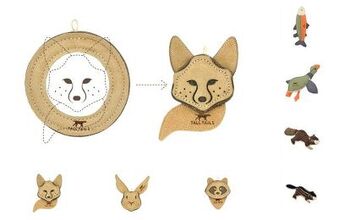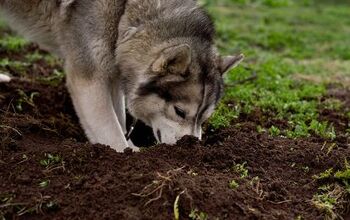Tall Tails: Interesting Facts About Dog Tails

Your dog’s tail can tell you a lot about how he is feeling, but communication is just one of the many things that dogs use their tales for. Some dogs have long, furry tails and others have short, stubby tails. For some breeds, it’s even common practice to have the tail cut. Let’s dive into some cool and interesting fact that will have you watching your dog’s tail for clues.
What is Tail Docking?
Tail docking is the practice of removing all or part of a dog’s tail and it is also known as “bobbing”. This surgical practice is typically performed when the puppy is just a few days old and the tail is still somewhat soft. In most cases, tail docking is performed without anesthesia – breeders and veterinarians rationalize this by claiming that the puppy won’t remember the pain for very long. As a practice, tail docking was historically performed because it was believed that it helped strengthen the dog’s back, to increase speed, and to reduce the risk for injury during baiting, fighting, ratting, and hunting.
Related: The Basics About Tail Docking in Dogs
For a time, it was also common belief that docking a dog’s tail prevented rabies. In the United Kingdom, there was a tax levied on working dogs that had tails so many dog breeds had their tails docked as a means of avoiding this tax. The practice continued to many years and, for some breeds, came to be part of the breed standard. Today, tail docking is banned in many countries on the grounds that it is unnecessary, painful, and cruel. Some of the countries that have banned tail docking include Australia, Austria, Canada, Finland, Greece, Norway, and Turkey. Some countries like England and Denmark only allow tail docking for certain working breeds. The United States is one of several countries that do not restrict tail docking – other countries include Egypt, Chile, Japan, and Mexico.
What Do Dogs Use Their Tails For?
As you may already know, one of the main functions of a dog’s tail is to communicate with other dogs. When a dog holds his tail high and wags it back and forth, he is happy; when he tucks his tail between his legs he is scared or submissive. In terms of physical functions, a dog’s tail helps the dog to maintain balance, especially during climbing or jumping. Many dog breeds known for their speed have long, slim tails that provide counterbalance when making sharp turns. Dogs known for their swimming ability have thick, strong tails that act as a rudder for steering in the water. Sled dogs have bushy tails that they use for insulation in cold weather.
Related: The Hideous Truth About Dog Plastic Surgery
In addition to enabling communication and improving balance, a dog also uses its tail to spread his scent. You have probably seen dogs sniffing each other’s rear ends – this is because there are two glands located just under the tail which produce a liquid that has a scent unique to each dog. By wagging its tail, the dog disperses that scent more efficiently. Alpha dogs carry their tails high because it allows for the maximum spread of its scent – submissive dogs, on the other hand, will tuck their tails between their legs to minimize the spread of their scent.
A dog’s tail is just as unique as the dog it is attached to and it serves a number of important functions. Before having your dog’s tail docked for aesthetic reasons or to fulfill breed standard requirements, think about the pain that’s caused just to achieve a certain look. Consider your dog’s best interests before you make your choice.
Kate Barrington is the loving owner of two cats (Bagel and Munchkin) and a noisy herd of guinea pigs. Having grown up with golden retrievers, Kate has a great deal of experience with dogs but labels herself a lover of all pets. Having received a Bachelor’s degree in English, Kate has combined her love for pets and her passion for writing to create her own freelance writing business, specializing in the pet niche.

Kate Barrington is the loving owner of two cats (Bagel and Munchkin) and a noisy herd of guinea pigs. Having grown up with golden retrievers, Kate has a great deal of experience with dogs but labels herself a lover of all pets. Having received a Bachelor's degree in English, Kate has combined her love for pets and her passion for writing to create her own freelance writing business, specializing in the pet niche.
More by Kate Barrington
























